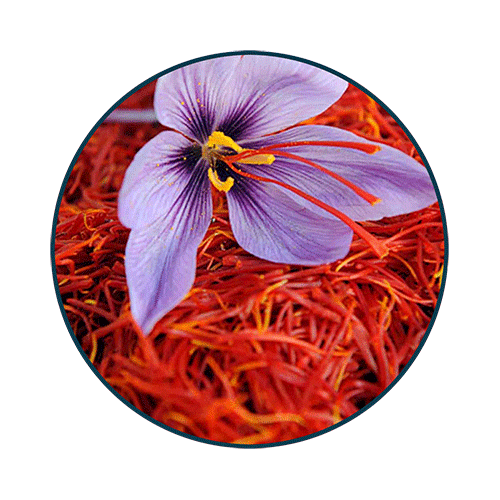08 Oct Saffron

Saffron
Crocus sativus
Extraordinary properties of saffron
Saffron or Zarparan is known as the most precious plant in the world. It is believed that it was first planted and used in Iran. Saffron is mainly harvested in the northeastern part of Iran, particularly Khorasan province.
Iran is the main producer of this so-called “Red Gold” in the world. About 92 percent of the world saffron is cultivated in Iran. In addition, Iran is also known to produce the best quality saffron in the world. According to the medical studies, researchers have discovered the extraordinary properties of this precious plant. That is why the plant is also known and used for its medical and health benefits, in addition to its popular use as a spice.
Having hundreds of hectares of farmland in Khorasan and southern Iran, as the origin of saffron, our company claims to produce and provide the premium quality Iranian saffron with the help of farmers and prominent specialists in the country.
Extraordinary properties of saffron
- Crocetin derivatives: Yellow compounds completely soluble in water
- Picrocrocin: Stimulates the stomach, having the bitter taste
- Containing 1% Safranal, saffron aroma and flavoring agent
- Moisture: 1310%
- Mineral compounds: 10%
- Containing Crocin, the colorant ingredient
Medicinal properties
Saffron is used as an antidepressant by some European pharmaceutical companies due to its euphoric properties. The effect of the herb is similar to fluoxetine in preventing the reabsorption of neural dopamine, dopamine, and serotonin due to its Safranal and serotonin ingredients.
According to the results, the reduction of serotonin in the body can increase premenstrual syndrome (PMS) and depression.
Because of Serotonin reabsorption in the herb, the hormone level increases and leads to reducing depression among women with PMS.
Besides, the antioxidant properties of the plant, due to the presence of various compounds such as crocin can prevent the activity of ROS (Reactive Oxygen Species) and fatty acids in the membrane. It can also increase the motility and morphology of sperm and consequently cure sexual disorders.
Having antioxidant compounds, the plant can cure and prevent cancer by dissociation of chain reactions associated with free radicals and limiting the synthesis of DNA and RNA in cancer cells. The cytotoxic activity of the plant due to the presence of carotenoid compounds can reduce the activity of cancer cell enzymes.
Non-pharmacological properties
In addition to its flavoring properties, the plant is used in painting fabric in developing countries. In addition, it is commonly used to garnish rice and pastry for its distinctive fragrance and gold-yellowish color. It is also wildly used in medicine and other industries.

